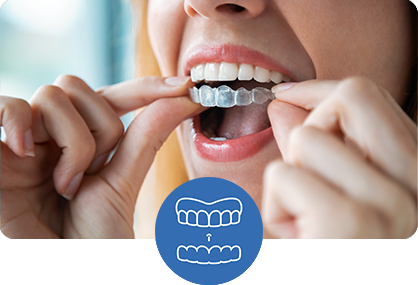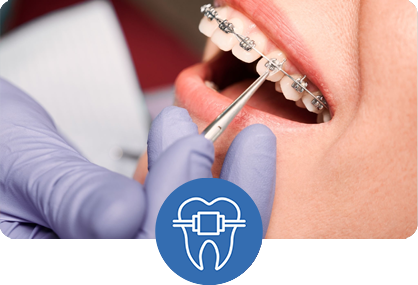For adults seeking orthodontic treatment without the visibility of traditional metal braces, Invisalign presents an excellent alternative. This innovative orthodontic system offers a discreet approach to teeth straightening with minimal impact on professional appearance or daily activities. The following comprehensive guide explores the optimal Invisalign treatment options available for adults and details how these solutions can significantly enhance dental alignment and overall smile aesthetics.
Key Takeaways
| Aspect | Invisalign Advantage |
|---|---|
| Appearance | Nearly invisible aligners |
| Comfort | Smooth and custom-fitted Invisalign aligners |
| Convenience | Removable for eating and cleaning |
| Treatment Time | Often shorter than traditional braces |
| Versatility | Treats various orthodontic issues |
Understanding Invisalign: A New Paradigm in Orthodontic Treatment
Invisalign represents a significant advancement in orthodontic technology. Unlike conventional metal braces, this system employs a series of transparent, custom-fabricated aligners that fit precisely over the teeth. These aligners are specifically designed for each patient and gradually guide teeth into their optimal positions. Invisalign treatment typically involves changing aligners approximately every two weeks, facilitating incremental tooth movement according to a predetermined treatment plan. Dental professionals utilize sophisticated 3D imaging technology to create a customized treatment protocol tailored to each patient’s specific orthodontic requirements.
Invisalign vs. Traditional Braces: Comparative Analysis
When considering orthodontic treatment options, understanding the distinctions between Invisalign and conventional braces is essential. While both modalities effectively address malocclusion, Invisalign offers several advantages particularly beneficial to adult patients. The selection between these treatment approaches depends on various factors including the severity of orthodontic issues, personal preferences, and aesthetic considerations.
Invisalign aligners provide aesthetic superiority through their virtually imperceptible appearance, removability for dietary flexibility and oral hygiene maintenance, and enhanced comfort compared to traditional bracket-and-wire systems. These attributes make Invisalign particularly appealing to adult professionals concerned with maintaining a polished appearance throughout treatment. However, in cases of severe malocclusion, traditional orthodontics may offer superior treatment outcomes. A qualified dental professional can provide personalized guidance regarding the most appropriate treatment approach based on individual circumstances. Treatment duration, lifestyle compatibility, and retention protocols should all factor into the decision-making process.
Top 5 Invisalign Options for Adult Orthodontic Concerns
Invisalign technology addresses a wide spectrum of orthodontic conditions commonly encountered in adult patients. Below are the five primary Invisalign treatment options for specific orthodontic concerns:
1. Invisalign for Crowded Teeth
Dental crowding presents significant challenges for proper oral hygiene, potentially leading to periodontal disease and dental caries. Invisalign effectively treats mild to moderate crowding by creating appropriate interproximal spacing. This gradual expansion facilitates improved access for cleaning and enhances aesthetic appearance. The aligners systematically reposition crowded teeth to alleviate compression, thereby reducing the risk of associated dental pathologies.
2. Invisalign for Diastema (Tooth Gaps)
Diastema, characterized by spaces between teeth, can impair both aesthetic appearance and oral function by trapping food particles. Invisalign treatment methodically closes these gaps through controlled tooth movement. This results in improved smile aesthetics and dental function while mitigating the risk of periodontal complications associated with food impaction in interdental spaces.
3. Invisalign for Crossbite
Crossbite conditions occur when upper teeth incorrectly position lingually to lower teeth during occlusion. Invisalign can effectively address this malocclusion through precision-engineered movement patterns. Correction of crossbite prevents abnormal dental wear patterns and potential temporomandibular joint dysfunction. The treatment utilizes sequential aligner therapy to gradually guide teeth into proper occlusal relationships, promoting facial symmetry and functional occlusion.
4. Invisalign for Overbite and Underbite
Sagittal discrepancies such as overbite and underbite can cause temporomandibular dysfunction and adversely affect facial aesthetics. Invisalign treatment can correct these jaw relationships through coordinated tooth movement. For more complex skeletal discrepancies, your dental provider may combine Invisalign with auxiliary appliances to optimize results. This comprehensive approach addresses both aesthetic concerns and functional occlusal issues, contributing to improved temporomandibular joint health and overall oral function.
5. Invisalign for Mild to Moderate Alignment Issues
Many adult patients present with minor to moderate dental misalignments, often resulting from orthodontic relapse or natural dental drift over time. Invisalign is particularly well-suited for these cases, offering efficient correction with minimal intervention. This treatment option is ideal for adults seeking conservative enhancement of smile aesthetics without extensive treatment duration or significant lifestyle modifications.
Clinical Benefits of Invisalign Treatment for Adult Patients
Selecting Invisalign as an adult offers numerous advantages beyond mere aesthetic improvement:
- Enhanced Oral Hygiene: Removability facilitates thorough cleaning and reduces risk of decalcification and periodontal disease.
- Superior Comfort and Convenience: Smooth thermoplastic material eliminates mucosal irritation, and removability allows unrestricted dietary choices.
- Expedited Treatment Timeline: Many cases achieve completion in approximately 12-18 months, typically shorter than conventional orthodontics.
- Reduced Clinical Appointment Frequency: Treatment protocols generally require fewer in-office adjustments than traditional braces.
- Predictable Outcomes: Advanced 3D imaging technology provides visualization of expected results prior to treatment initiation.
Invisalign Technology: Mechanism of Action
Invisalign employs sophisticated digital imaging and computer-aided design to create a precise treatment plan customized for each patient. This technology facilitates accurate tooth movement prediction and allows patients to visualize expected outcomes before commencing treatment. The practitioner generates a three-dimensional digital model of the patient’s dentition, which serves as the foundation for designing a progressive series of aligners that will systematically reposition teeth to their desired locations.
The aligners are fabricated from proprietary SmartTrack® material, a medical-grade thermoplastic specifically engineered for orthodontic applications. This material delivers consistent, gentle forces for predictable tooth movement while maintaining superior comfort compared to conventional orthodontic appliances. The biomechanical properties of this material allow for precise control of tooth movement vectors, resulting in more predictable outcomes than previous generations of clear aligner therapy.
Clinical Management of Invisalign Treatment: Recommendations for Optimal Outcomes
To maximize the efficacy of Invisalign treatment, adherence to the following clinical protocols is essential:
- Maintain aligner wear for 20-22 hours daily, removing only for meals, beverage consumption (except water), and oral hygiene procedures.
- Clean aligners regularly using lukewarm water and a soft-bristled toothbrush to prevent bacterial accumulation and staining.
- Progress to subsequent aligners according to the prescribed schedule, typically every 1-2 weeks as directed by your dental provider.
- Attend all scheduled monitoring appointments to ensure treatment is progressing as planned.
- Store aligners in their protective case when not in use to prevent damage or loss.
- Practice meticulous oral hygiene after eating, ensuring you wait at least 30 minutes before brushing your teeth, to prevent enamel decalcification, before reinserting your aligners.
Post-Treatment Retention Protocol
Following completion of active Invisalign therapy, adherence to a comprehensive retention protocol is critical for maintaining treatment results. Post-treatment management typically involves the use of retention appliances to prevent orthodontic relapse. Your dental provider will prescribe a specific retention schedule, typically beginning with full-time wear and transitioning to nocturnal use as stabilization progresses.
Your practitioner will provide individualized retention instructions and schedule periodic evaluation appointments to monitor stability of the corrected dentition. These follow-up assessments are crucial for identifying and addressing any minor relapse tendencies before significant regression occurs. Additionally, maintaining diligent oral hygiene practices and regular professional dental maintenance will help preserve the health and appearance of your newly aligned dentition over the long term.
Choosing Oakwood Dental for Your Invisalign Treatment
At Oakwood Dental, our practice specializes in delivering exceptional Invisalign treatment outcomes for adult patients. We employ state-of-the-art diagnostic technology to develop treatment protocols tailored to each patient’s unique orthodontic needs and aesthetic goals. We recognize the individuality of each case and invest time in comprehensive assessment and treatment planning discussions before initiating therapy.
We acknowledge that every patient presents with distinct orthodontic considerations, which is why we develop personalized treatment strategies for each Invisalign case. From initial consultation through final result delivery, our team provides comprehensive care and support throughout your orthodontic journey. Our clinical team maintains current knowledge of the latest Invisalign innovations to ensure you receive the most advanced and efficient treatment available.
Conclusion: Achieving Optimal Dental Alignment with Invisalign
Invisalign technology offers adult patients a discreet, comfortable, and effective orthodontic solution. With its numerous advantages and versatile treatment applications, it becomes evident why Invisalign has emerged as the preferred orthodontic modality for adults seeking dental alignment correction. This system allows for significant dental improvements without compromising professional appearance or lifestyle, accounting for its growing popularity among adult orthodontic patients.
If you are considering Invisalign treatment, we invite you to schedule a consultation with our team at Oakwood Dental. During this appointment, we will conduct a comprehensive orthodontic assessment, address your questions, and determine your candidacy for Invisalign therapy. Take the initial step toward achieving your optimal smile aesthetics with Invisalign treatment. With our clinical expertise and individualized approach, we can help you attain your desired smile transformation while enhancing your overall oral health.

 718-979-2121
718-979-2121












